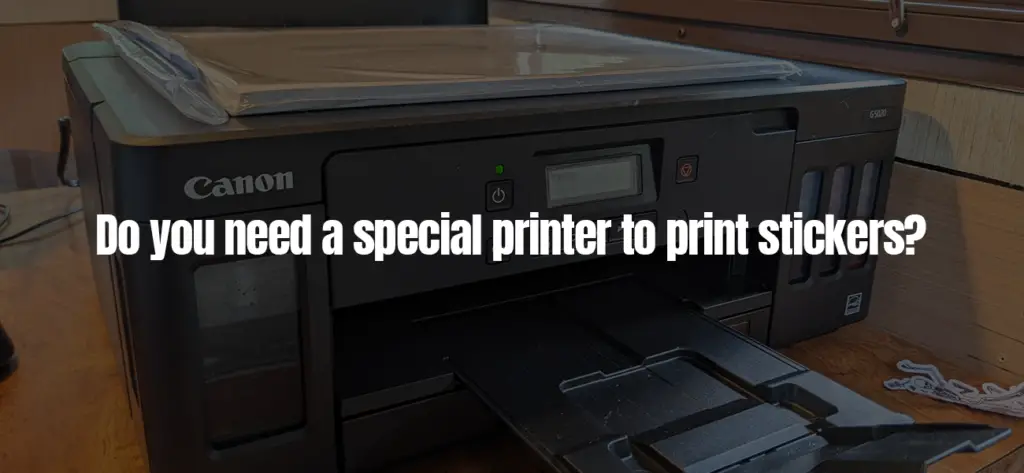Printing stickers has become increasingly popular, whether for personal use, promotional materials, or business branding.
Do you need a special printer to print stickers?
When it comes to printing stickers, there are various options available, each offering unique advantages and considerations. In this comprehensive guide, we will delve into the different types of printers used for printing stickers, their pros and cons, and some essential tips for achieving the best results.
Inkjet printers
Inkjet printers are one of the most common and versatile options for printing stickers. These printers use liquid ink sprayed onto the paper or sticker material to create images and text. They are widely available, relatively affordable, and offer high-quality color printing.
Inkjet printers are suitable for printing stickers on various materials, such as glossy, matte, or photo-quality sticker paper.
Pros:
- Excellent color reproduction and image quality.
- Can handle various sticker materials, including specialty papers.
- Suitable for small to medium-sized sticker printing projects.
- Affordable and readily available in the market.
Cons:
- Ink may smudge if not allowed to dry properly.
- Sticker prints may not be as durable compared to other printing methods.
- Printing speed might be slower, especially for high-resolution images.
Examples of Inkjet Printers:
- Canon PIXMA series (e.g., Canon PIXMA Pro-100, Canon PIXMA TS9520)
- Epson Expression series (e.g., Epson Expression Photo XP-8600, Epson Expression Premium XP-7100)
- HP DeskJet/OfficeJet series (e.g., HP DeskJet 3755, HP OfficeJet Pro 9015)
Laser printers
Laser printers utilize toner powder to fuse images onto the paper or sticker material. They are known for their speed, durability, and crisp text printing. Laser printers are an excellent choice for printing simple text-based stickers or basic graphics.
Pros:
- Faster printing speeds compared to inkjet printers.
- Suitable for text-heavy sticker designs.
- Toner-based prints are more water-resistant and smudge-proof.
- Ideal for high-volume printing needs.
Cons:
- Limited color printing capabilities, not as suitable for photo-quality stickers.
- May have limitations with certain sticker materials.
- Laser printers designed for stickers might be costlier.
Examples of Laser Printers:
- Brother HL-L2350DW
- HP LaserJet Pro MFP M281fdw
- Samsung Xpress C480FW
Dye sublimation printers
Dye sublimation printers use heat to transfer dye onto the sticker paper, resulting in vibrant and long-lasting prints. They are well-suited for photo-quality stickers and designs requiring high color accuracy.
Pros:
- Produces professional-quality, photo-realistic stickers.
- Images are embedded into the sticker paper, making them more durable.
- Capable of printing a wide range of colors with precision.
- Ideal for custom designs and high-resolution images.
Cons:
- Initial setup cost and maintenance can be higher.
- Limited sticker material options, primarily for specialized dye sublimation papers.
- Not as readily available as inkjet or laser printers.
Examples of Dye Sublimation Printers:
- Epson SureColor P600
- Canon SELPHY CP1300
- Sawgrass Virtuoso SG500
When printing stickers, regardless of the printer type, it is crucial to use sticker paper or adhesive-backed materials specifically designed for the printer. Using the correct material ensures that the printer performs optimally and that the stickers adhere properly.
Additionally, keep the following tips in mind for the best sticker printing results:
- Choose the Right Resolution: For high-quality stickers, ensure that the image resolution is suitable for the printer’s capabilities. Higher resolution images result in crisper and more detailed prints.
- Consider Sticker Material: Select the appropriate sticker material based on your project’s needs, such as glossy, matte, vinyl, or specialty papers.
- Allow Sufficient Drying Time: If using an inkjet printer, allow the stickers to dry completely before handling to prevent smudging.
- Perform Test Prints: Before printing a large batch, do a test print to check colors, alignment, and quality.
- Calibrate the Printer: Properly calibrate the printer for accurate color reproduction.
- Use OEM Inks and Toners: For consistent results and printer longevity, use original manufacturer inks and toners.
- Consider Professional Printing Services: For complex or large-scale projects, consider using professional printing services for optimal results.
In conclusion, you don’t necessarily need a special printer to print stickers.
The choice of printer depends on your specific needs, budget, and the quality required for your stickers. Whether you opt for an inkjet printer for versatile use, a laser printer for faster and text-heavy prints, a thermal printer for small-scale applications, or a dye sublimation printer for photo-realistic stickers, each option has its own benefits.
By selecting the right printer and following the essential tips, you can create impressive and eye-catching stickers to suit your purpose. Happy sticker printing!
I’ve been an Etsy seller and Artisanal creator for over 8 years now and have gained so much valuable experience along the way that I would like to share with you. Read more about me here



